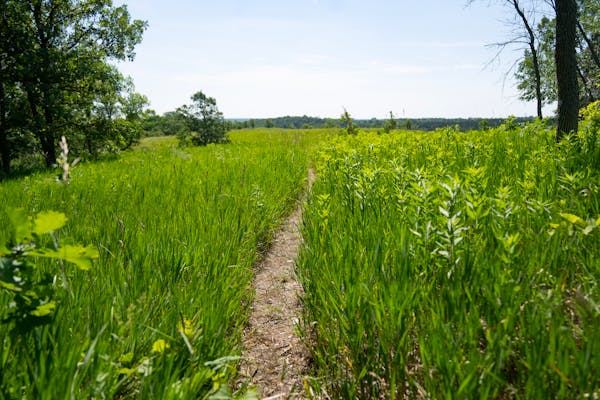Minnesota's Upper Sioux Agency State Park will permanently close to the public on Feb. 16, as the state gets ready to transfer the land to the nearby tribal community.
The Minnesota Department of Natural Resources announced Wednesday that it will turn over the park, built on a notorious site of the U.S.-Dakota War of 1862, to the Upper Sioux Community by mid-March, completing the transfer ordered by lawmakers last year.
The state agency will need about a month to clear out buildings, vehicles and equipment as well as remove park signs, DNR Commissioner Sarah Strommen said.
"It is the right thing to do," Strommen said of the land transfer. "The circumstances here are singularly unique."
The 1,300-acre park of rolling hills, bent oak trees and wild prairie flowers opened in the 1960s where the Yellow Medicine and Minnesota rivers meet, near Granite Falls. It has a few dozen campsites but is primarily used for day trips, with winding horseback riding trails and short footpaths.
It's the site of the former Upper Sioux Agency, a government-run campus of employee housing, warehouses and a manual labor school. In the early 1860s, the agency was responsible for paying the band of Dakota the money, food and supplies owed to them under the treaties that gave the United States much of what is now Minnesota.
Those payments were rarely made as promised. When supplies were late, the Dakota tried to buy necessities from traders at the agency on credit. They were refused and mocked even as they approached starvation, according to letters kept by the Minnesota Historical Society.
In 1862, the Dakota attacked and the war began, destroying the agency. All that remains now is an employee duplex, rebuilt and restored decades after the war, alongside the scattered brick ruins of the foundations of the other buildings.
Kevin Jensvold, chairman of the Upper Sioux Community, had asked lawmakers and the U.S. Department of the Interior for more than a decade to close the park, arguing that the site where people starved should not be used for picnics.
The park is also one of the least visited among Minnesota's state parks. It needed costly repairs to its visitor center. Its main road and access point washed out in a flood and has been closed for several years.
"So when the community renewed its request, we looked at it in light of those challenges," Strommen said. It was an easy decision to support, she said.
Ann Pierce, director of the DNR's parks and trails division, said the agency is committed to replacing the park in some way in the Granite Falls area. That could come through adding land or other amenities to existing parks or buying new land to make public, Pierce said.
Lawmakers set aside $5 million for the transfer, the bulk of which will be used to try to replace the park.
More money could be available if needed, Pierce said. The agency will work with local communities and the public throughout the spring to try to come up with a plan to replace the park, she said.

Licensing for Minnesota recreation making major leap to digital age

How well are Minneapolis residents recycling?

Wolves vs. Nuggets is set. Here's everything we know about Round 2.

'Blended Harmony' at History Theatre unearths tuneful history of the first Asians on Broadway

